Is that a copperhead? No, it’s more likely one of these non-venomous NC snakes
On social media sites, seemingly every snake in every photo is identified as a venomous copperhead.
Talena Chavis, owner of Cary-based NC Snake Catcher, understands the mistake. When you’re frightened, it’s easy to see a brown pattern and think a venomous snake is hanging around your home.
But there are many other types of snakes in North Carolina, and most are non-venomous. Some of the most common non-venomous snakes in the Triangle are the black rat snake, the black racer snake and the brown (or dekay) snake. The black rat and black racer snakes are solid black adults. The grown dekay snake, though it is small, has a pattern that can look similar to a copperhead.
The lesson: Identifying snakes isn’t always straightforward.
“The hardest part of our black snakes is that neither snake is completely black when it’s born. They look completely different with dark brown spots,” Chavis said.
“People call me all the time thinking they have rattlesnakes or copperheads, not knowing this is a completely harmless snake that’s good to stay in their yard.”
The News & Observer spoke with Chavis to learn more about the “copperhead” calls she often receives and what she wants the public to know about these non-venomous, beneficial snakes.
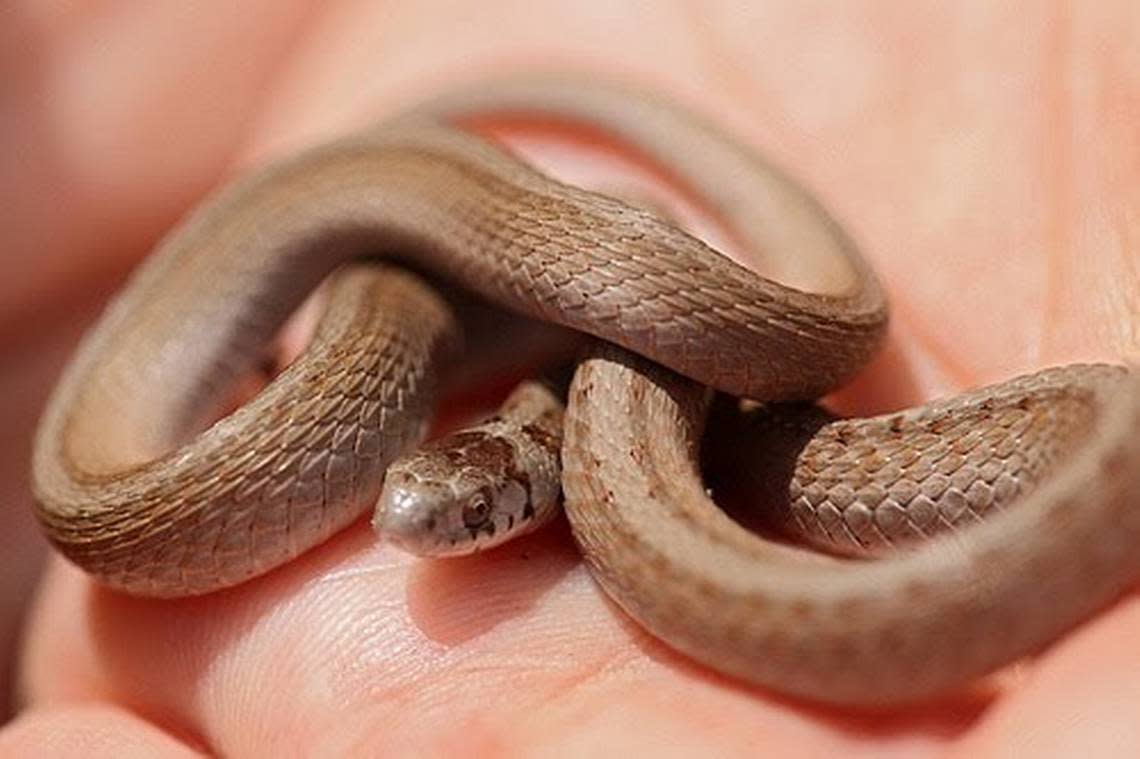
Often misidentified: Brown (or dekays) snake or copperhead?
The brown snake, which experts call the dekay from its latin name Storeria dekayi, is “the most victimized snake in our area,” Chavis said.
Homeowners think these snakes, which can grow to just over a foot long, are baby copperheads, since both snakes are brown with a darker brown pattern.
“Dekays are the least known and most confusing because of their patterns,” she said.
There are a few telltale signs the snake in your yard is a Dekay, not a copperhead:
• Size: Full-grown brown snakes are a foot and a half long at a maximum. The brown pattern can be mistaken for a full-grown copperhead, but baby copperheads look much different.
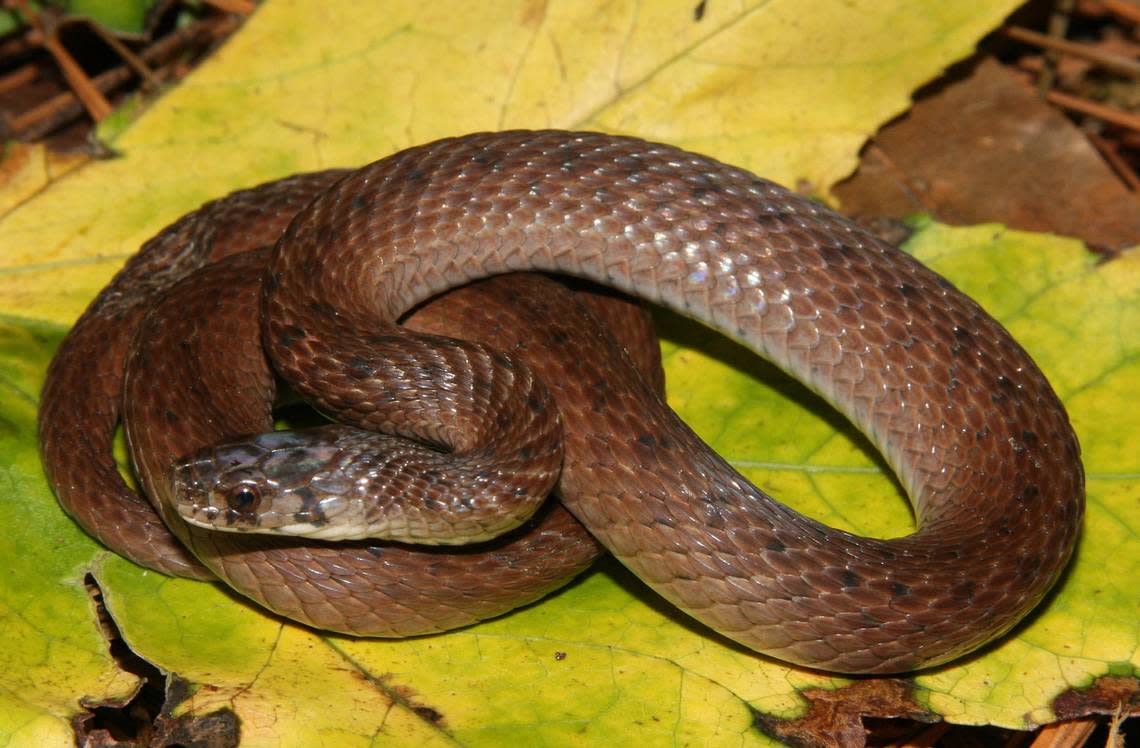
• Color: Baby copperheads have neon green tails.
“I like to point to my safety glove and say ‘A baby copperhead has this color on it. The dekay does not,” Chavis said.
• Habitat: Brown (or dekay) snakes are fossorial snakes, meaning they burrow under objects or in the dirt. You probably won’t see one until you’re digging or lifting up pavers in your backyard.
Copperheads are known to sunbathe. They will squeeze themselves into existing cracks in structures, but you won’t find them covered in dirt or underneath stones.
If you see one while you’re digging around your garden bed, don’t worry. The snakes are non-venomous, and their teeth are so small that they can’t pierce skin.
“Basically, if you’re not an earthworm, slug or snail, you’re safe,” Chavis said. “And if you’re a gardener, you’re going to want this little guy around.”
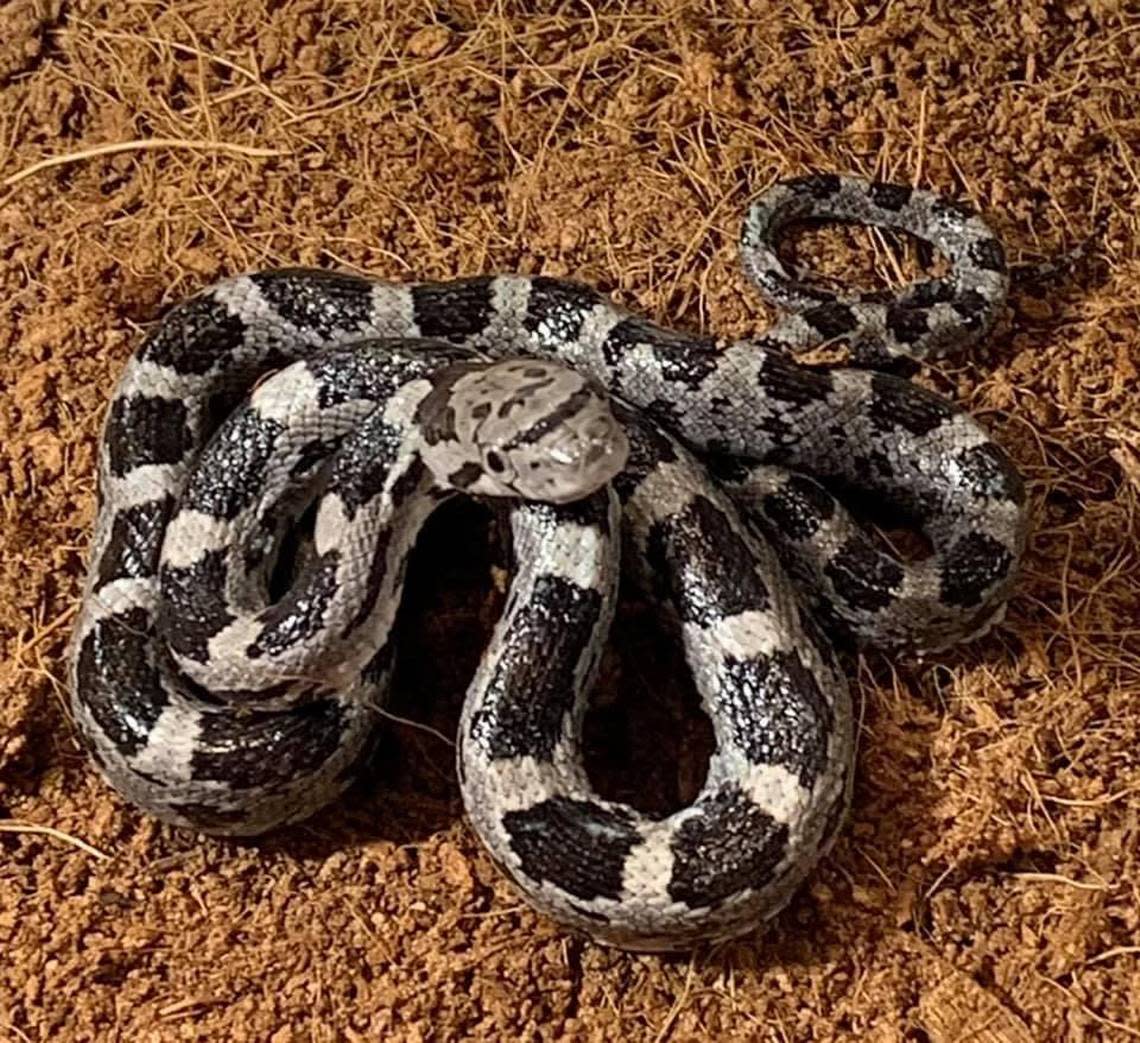
How to ID a black rat snake
Black rat snakes are named for their favorite foods (rodents), and they are excellent climbers. Juvenile black rat snakes can look strikingly similar to adult copperheads, but there’s one key difference: Black rat snakes are often found in high places.
“I often get calls that there’s a copperhead in someone’s attic. And I tell them, I’ll determine the kind of snake when I get there, but if you’re correct, it will be the very first time I take a copperhead out of an attic,” Chavis said.
“I still have never seen a copperhead in an attic, and I doubt I ever will. Black rat snakes like to climb, while copperheads stay low.”
• Color: The adults have glossy black backs. Juveniles are light in color and have brown patches all over them, making them easily mistakable for a copperhead.
• Size: Adult black rat snakes can grow up to six feet in length.
• Food: Black rat snakes, like many other wild animals, follow the food.
“People freak out when they find black rat snakes because they are so big, but the truth is, if you have a black rat snake, you have rats (or some other kind of rodent),” Chavis said.
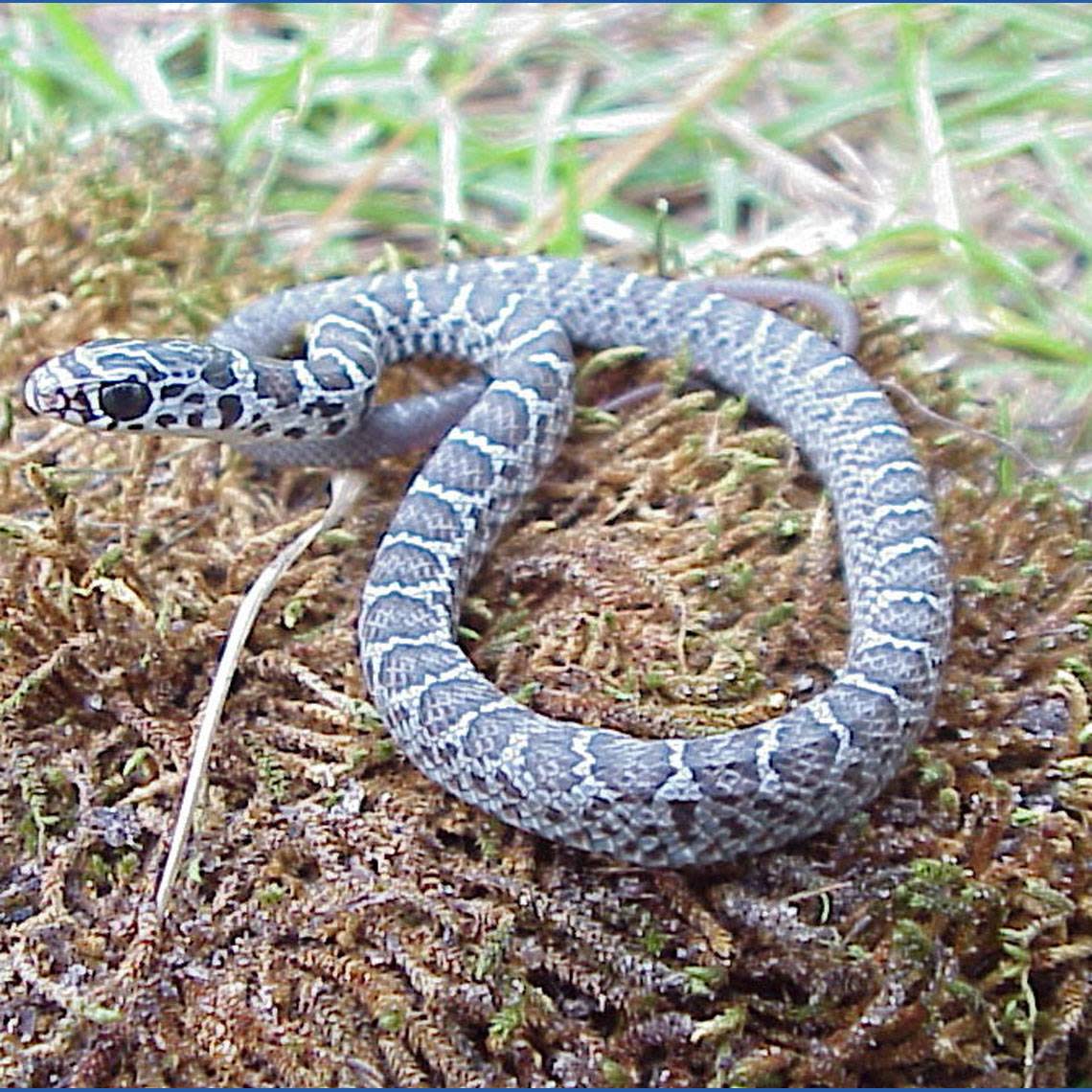
What does a black racer snake look like?
These nonvenomous snakes actually eat copperheads.
“The black racer is the unfriendly cousin to the black rat snake,” Chavis said, adding that its name comes from its speed.
“It’s more aggressive, and it’s not afraid to tell you it’s hanging around. When people are watering their bushes, they like to pop their heads out, like dinosaurs in Jurassic Park.”
• Size: Black racers can grow to six feet in length, though their average size is four feet. (Copperheads are two to three feet long.)
• Color: Juvenile black racers typically have brown spots, making them mistakable for a copperhead. Adult black racers are slender and black (or dark gray) with smooth scales.
• Food: Along with copperheads (and other snakes), black racers eat lizards, rodents and frogs.
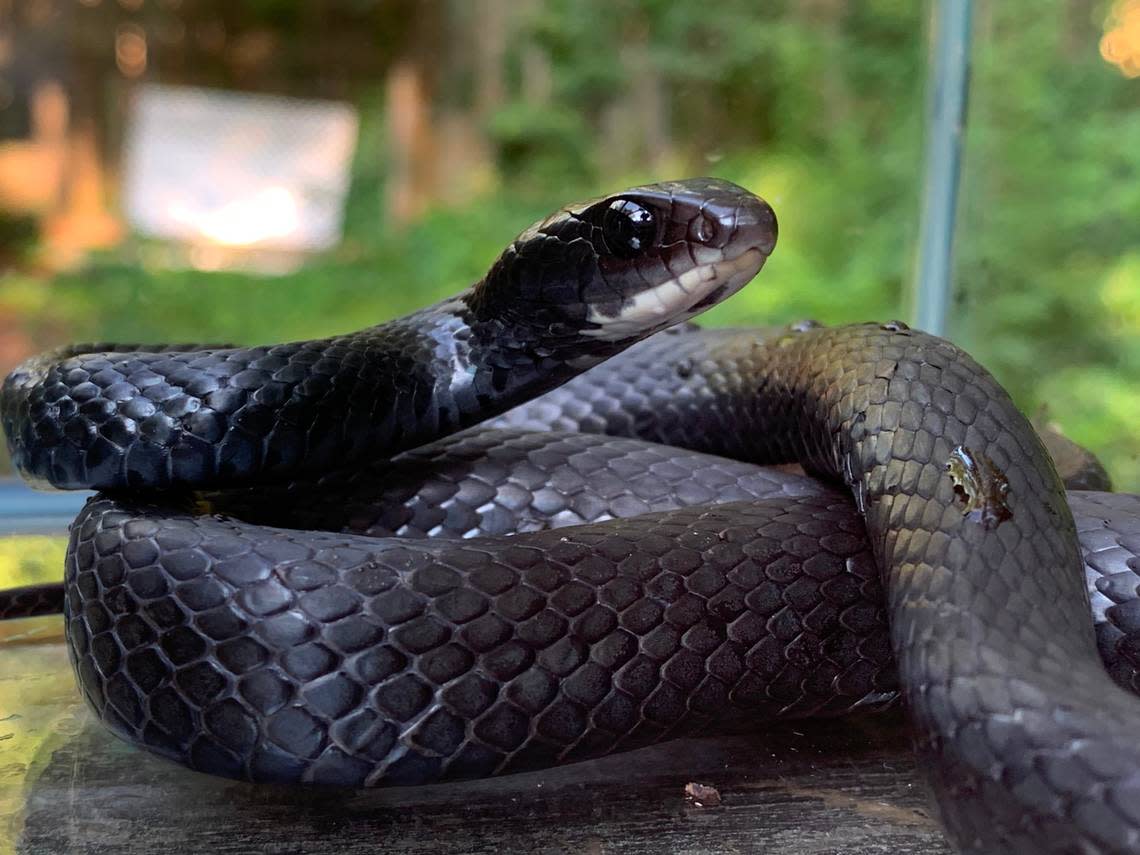
What does a copperhead snake look like?
While you can’t rely solely on markings when identifying snakes (unless you’re an expert), it’s good to know what copperheads look like. Remember that there can always be variations in color and pattern.
• Pattern: Copperhead snakes are brownish-gray in color with an hourglass-shaped pattern on their backs, which resembles a Hershey’s Kiss.
• Color: Newly born or very young copperheads will resemble their parents — except they’ll have a bright yellow or neon green-tipped tail that darkens pretty quickly.
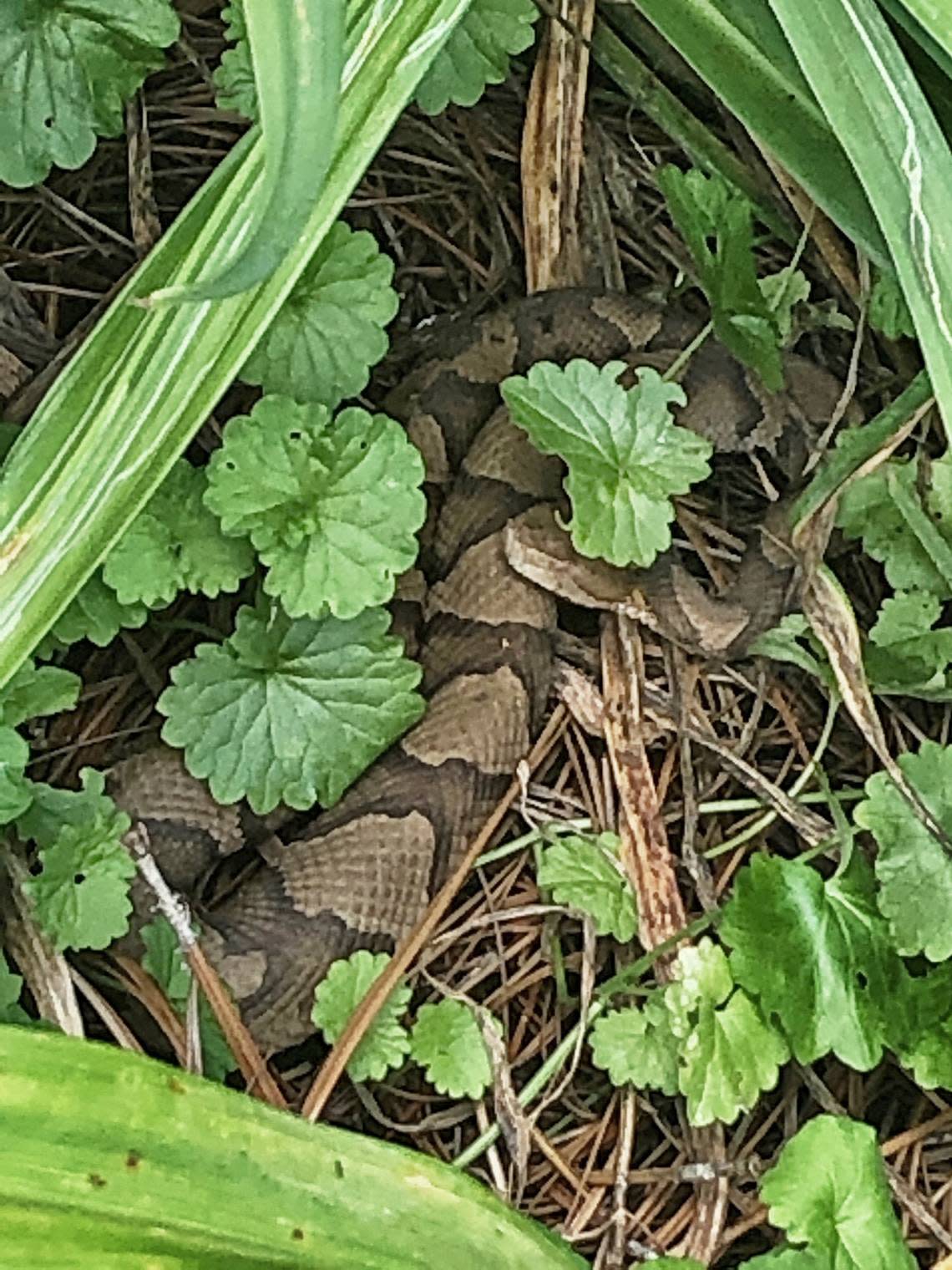
How to avoid snake problems
The NC Wildlife Resources Commission offers the following advice for preventing conflicts with snakes:
• Declutter your yard: Snakes seek out areas with thick cover, especially where rodents and other prey species are likely to be found. By trimming bushes and plants, and by clearing out piles of rock, wood and other debris, the property around your home will be less appealing for snakes.
• Remove entry points: Close gaps and holes, which could encourage snakes to come inside your home. Repair damage to siding and foundations, and seal openings under doors, windows and around water pipes.
• Be aware of your surroundings: Watch where you step and where you place your hands when on walks outside or doing work in the yard or garden. Be prepared for the possibility of encountering a snake.
• Educate yourself and others: Keep a respectful distance from wildlife, and don’t touch them. Know the common snakes in the Triangle and what they look like. Pay particular attention to venomous snakes.
(Source: ncwildlife.org)
Triangle Asked & Answered: What do you want to know?
Have a question about something in our community? The News & Observer’s Service Journalism team wants your questions for our Triangle Asked & Answered series. Reach out to us by filling out this form or by sending an email to ask@newsobserver.com.
We asked readers to show us their favorite trees in the Triangle. The results are stunning
Squirrels love chewing car wires. Here’s why — and how to get them to stop
